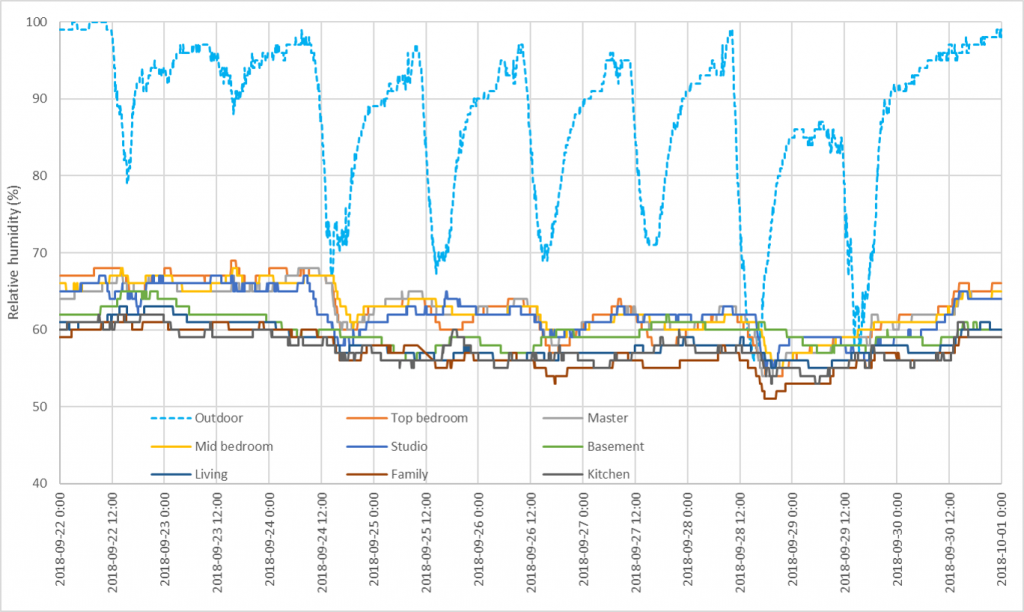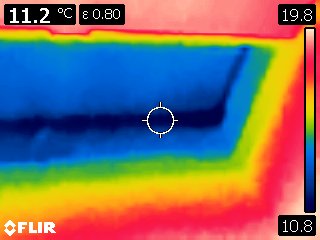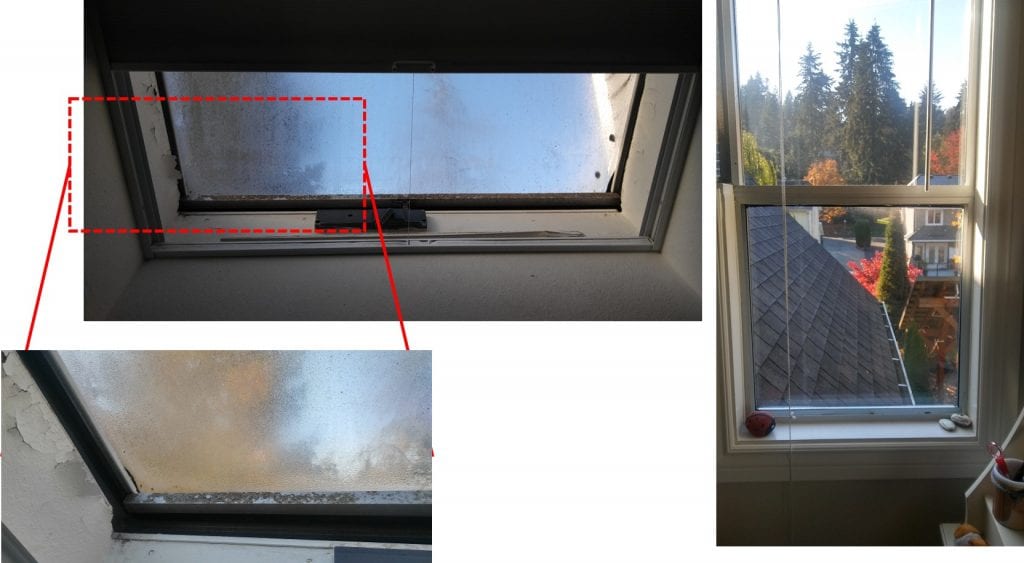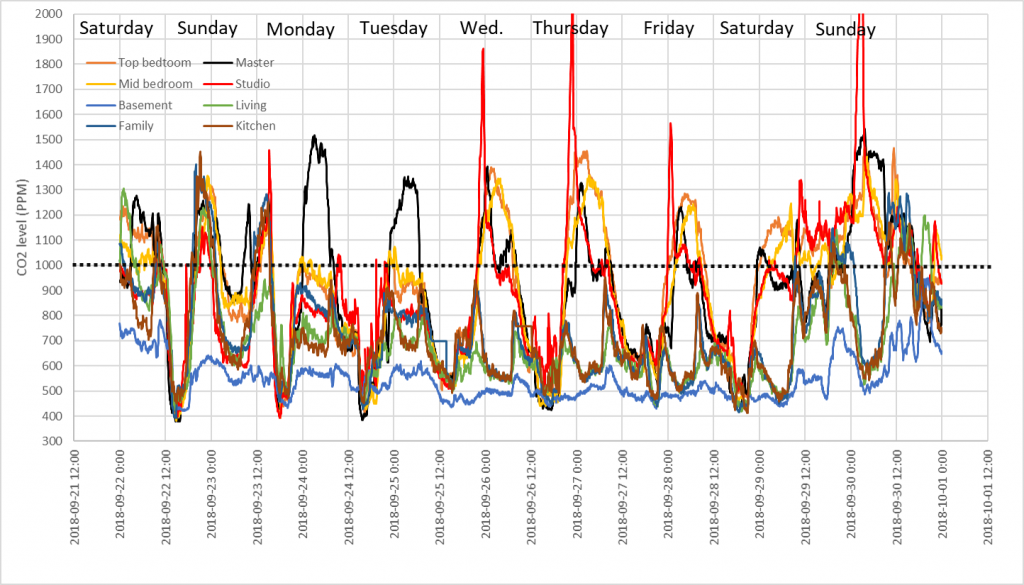The air temperature, humidity, and CO2 levels in the various rooms of a house tell a story about the characteristics of the house, and the habits of its dwellers. The Figures below describe air temperature, relative humidity, and CO2 data from the various rooms in a house during the last week of September of 2018. The house is a five-level townhouse built in 1986 located at the corner of a row of houses and with south, east, and west orientations exposed. The house has no controlled ventilation, so uncontrolled ventilation air enters through the leaky enclosure and through windows, when open. The heating system is hydronic baseboard heating with three vertical zones: low zone includes basement and living room, medium zone includes kitchen and family room, and top zone includes bedrooms and studio. The hose has no mechanical cooling.
Can the Figures below tell you something about: 1) the family patterns during the weekdays and the weekends? 2) the ventilation and indoor air quality in the rooms? 3) the thermal stratification? 4) the leakiness of the house? 5) the windows opening patterns? What else? Answering these questions requires taking a closer look at the data at higher resolutions: daily, hourly, and sub-hourly.
Would the dwellers be thermally comfortable in this house? Yes, when cold, they wear more clothing; and when warm, they open windows and use fans in the hottest days of summer particularly in the warmer rooms top rooms and at sleeping time.

Is moisture an issue? Yes. Despite having acceptable humidity levels, condensation is seen in a roof skylight at the top bedroom. Why? Hint: the skylight is old (leaky, not thermally broken, low thermal inertia) and facing the sky (undercooling due to night sky radiation). See infrared picture below of the skylight and check the Psychrometric chart…



Why is the skylight wet and not the window, given that both are located in the same room?

CO2 concentration is a surrogate for indoor air quality. High CO2 levels indicate: human presence, and possible low ventilation and potential air quality problems (as humans are main air polluters). However, CO2 concentration does not tell the whole story about the air quality in a house. For example, recurrent high humidity levels in bathrooms and condensing surfaces will eventually lead to mold and mold spores in the air. If the moisture problem gets severe, then surfaces rot and aggressive fungi displaces the surface mold and may produce toxins. Furthermore, CO2 levels do not tell anything about the presence of gases or fine particulates from cooking. Pollutants from house cleaning and vacuuming over the weekends are also not accounted for by CO2 concentration levels.

Can smart algorithms interpret the data in real-time and infer meta-knowledge that can be used to provide feedback to dwellers and operate environmental systems smartly? Can they tell when the air quality is good and is not a good idea to open windows, to conserve energy?
Provided that the house has a good enclosure, would smart indoor environmental systems help deliver just the conditions that are needed in the various rooms? How? What would these systems need to monitor and where? What types of sensors and how many would be required?